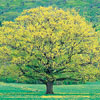|
|
Post by trixtrax on Mar 2, 2010 8:45:22 GMT -5
This plant really deserves more attention, perhaps its not popular because it's name looks a bit like 'ugly'! Starting this thread even though I could have sworn I saw a post on here mentioning this plant, but can't find it at the moment. A small evergreen bush in the normally tropical Myrtaceae family, it is native to South America in the temperate regions. Though usually small here in Washington (and elsewhere I've heard it described) my friend described eating some berries from chest-height bushes in South America on a open mountainous area. The plant itself reminds me of Gaultheria shallon and the fruits remind me of blueberries, and when ripe, in taste too. Even somewhat unripe, the berries are still edible, like maybe a bit of clove (its relative) or some unplacable spice. More on the subtle end of spicy though. Ripe, they taste like a very agreeable berry taste, something similar to slightly mealy blueberry. A satisfying treat. What is also novel is that many seem to start fruiting in their second year and not just a few fruits either the 2nd year. I collected some seed from a garden here, the plants were imported from different sources and showed slight variations in flavor and hardiness. The flavor variation might have just been varying stages of ripeness. The plant is supposed to survive to around 10F or so. They also seem to do well in containers, so this presents a possibility. This year I am going to plant some seeds of this plant, but not sure how to approach this one and not wanting to roll the dice too much and guess, if I can help it. There is not much information about this plant that I could find, the only germination info comes from pfaf, which states that the seeds should be soaked for 24hrs in warm water then sown in a greenhouse in late winter. Pfaf suggests cuttings can be taken, and from what I have seen, they root so well that some of the cuttings actually fruited the year the cuttings were taken! Anyone have any experience with this plant that they would like to share? Any germination ideas? I'm all ears. Links: en.wikipedia.org/wiki/Ugni_molinaewww.pfaf.org/database/plants.php?Ugni+molinae--------------- On a related note, there is another interesting plant from S. America that is a woody liana with a very beautiful flower. It is called Copihue (Lapageria rosea). I hear it is sometimes grown as a ornamental. The plant supposedly has an edible fruit and the roots are used as a type of sasparilla. I will ask my friend about this plant when he comes back from his home in Chile. Until then here is the wiki page: en.wikipedia.org/wiki/CopihueAnyone grow this plant or know anything about its uses? |
|
|
|
Post by orflo on Mar 2, 2010 14:39:07 GMT -5
These two are on my wish list as well... I don't know anything about the temperature copihue will take, but I do know ugni molinae is quite hard to grow outside here. i know of only one plant in the open, and that's actually squeezed in between two heated greenhouses, in a botanical garden, and is on the sunny south part of that garden. i obtained seeds from that plant last year, but none of them germinated. I didn't stratify them though, assuming they didn't need that, coming from Chile. Maybe I was wrong, because winters over there can be quite cold... Someone in Florida tried to take some cuttings from her plant for me, but it didn't work...It seems to be sold by some nurseries over there, probably in California as well, I didn't check the internet. Whenever I try to obtain it again, it will be my third time, so I should be lucky then...    |
|
|
|
Post by Hristo on Mar 2, 2010 17:30:50 GMT -5
|
|
|
|
Post by trixtrax on Mar 2, 2010 18:47:34 GMT -5
From what I have seen, rain seems to be a large factor in killing them. Frank, you mentioned another nice fact which is they seem to self-fruit well.
Hristo, thank you for the link. I'll keep an eye out.
|
|
|
|
Post by stevil on Mar 3, 2010 3:52:52 GMT -5
Lapageria rosea is the National Flower of Chile and I was lucky enough to see it when I had a short holiday after attending a conference in Concepcion (in the news these days…) a few years ago. I’d forgotten about the edible fruit though. There were posted a number of pictures of this beautiful and much sought after ornamental with different flower colours on the SRGC forum: www.srgc.org.uk/smf/index.php?topic=1573.0Various forum members also cultivate it (search for the species on this site), but I think it’s a late flowerer, so maybe the autumn is too short for fruits? I also saw Ugni in Chile, but can’t recall having seen it in botanical gardens in Europe. However there are many nurseries selling it in the UK: apps.rhs.org.uk/rhsplantfinder/plantfinder2.asp?crit=ugni&Genus=Ugni Ugni molinae 34 supplier(s) Ugni molinae 'Flambeau' 16 supplier(s) Ugni molinae 'Variegata' (v) 1 supplier(s) (with it so easily available in the UK, it would I imagine be easy to get hold of in the Dutch nurseries which specialize on woody plants). I've had Ugni seed, but have never succeeded germinating it. I have a picture of another species, Ugni candollei (from Kew). A quick check reveals that a 16-year old, 1m high plant grows in the Hillier Arboretum in the South of England (I’ve been there several times, but must have missed it as I don’t have any photos). I returned from my trip to Chile with various seed and went through a "Chile period" although most are not hardy here. I grow/have grown the following (bringing inside for the winter). Luma apiculata (this one might be worth trying – I came back from Chile with jam made from the fruits). Aristotelia chilensis Schinus molle Maytenus boaria (you could buy a herb tea made from the leaves in supermarkets in Chile) |
|
|
|
Post by blueadzuki on Mar 3, 2010 7:52:14 GMT -5
stevil, dont suppose you brogh back any Chilean Hazel (Gevuina avellana) seeds with you? I tried to grow a selling of one a couple of months back to no sucess (guess they were right whne they said they were tricky. and wanted do know if anyone here had had better luck than I.
|
|
|
|
Post by stevil on Mar 3, 2010 12:44:34 GMT -5
No, I didn't see that one. I have had seed, but no success. I saw a small one in the Botanical Garden in Oxford, UK, last spring (see picture, is that frost damage?), but have never seen it fruiting.  |
|
|
|
Post by blueadzuki on Mar 3, 2010 17:10:10 GMT -5
And alas, it is almost certian that that one is no good foodwise. From what I understand, while there have been trial attepts to introduce the things as ornametal trees in the UK (also in California) (provied the climate is appropriate they are nice evergreens) almost all of the cultivars chosen for these projects have small bitter nuts, so many in fact that the person who informed me on the in and outs of the trees basically said that, if you actually wanted a tree that would produce good nuts, your best bet was to try and bring home a BIG bag of unshelled nuts from Chile being sold for food plant ALL of them and hope you were lucky enough to get 1 or 2 to germinate.
Oh and that isn't frost damage, it fetilizer destruction; that tree is dying. Apparently, like most Proteacae members, Chilean hazel finds even tiny amounts of extra nitrogen (like what it will get just from runoff) deadly toxic.
|
|
|
|
Post by stevil on Mar 4, 2010 3:23:47 GMT -5
Interesting - thanks for that, Blue!
|
|
|
|
Post by rhizowen on Apr 21, 2010 16:05:32 GMT -5
Ugni grows really well here in Cornwall and produces delicious fruits. My plant survived the last winter with minimal damage. I've even seen Gevuina flowering and fruiting here too. the squirrels normally get all the nuts, so I haven't tasted any yet.
|
|
|
|
Post by castanea on Apr 21, 2010 20:26:01 GMT -5
I've grown ugni for a few years until it died this last winter. The fruit has a nice flavor but it is very small. Mine froze at about 22 degrees F.
|
|
|
|
Post by rhizowen on Apr 23, 2010 7:52:58 GMT -5
Interesting (maybe) factoid - ugni was Queen Victoria's favourite fruit. Slow to ripen, but worth the wait. Truly scrumptious fruit. I know a spot in Cornwall where they grow aplenty, but I'm not telling......
|
|
|
|
Post by rhizowen on Apr 23, 2010 7:55:43 GMT -5
Luma apiculata self seeds in places here. Nowhere near as nice as ugni though.
|
|
|
|
Post by atash on Apr 23, 2010 11:14:24 GMT -5
It's a little fussy to get established but once established it's fairly easy to grow. It is a member of Myrtaceae, which means it has delicate fussy roots and does not transplant well. Also does not recover from frost damage to its buds--but it suckers readily from underground shoots. Try it in moist, acidic, fast-draining soil with a bit of organic matter, open sunny situation. Give it some TLC the first year or so, until well-established. The fruit tastes like a combination of strawberry and guava (a slight turpentine overtone). They are roughly the size of a pea, and rose-colored. The plants are fairly low-growing and very bushy. They spread by underground shoots. Winter rain is not a problem; it comes from winter-rainfall climates in southern Chile. It is almost perfectly adapted to our climate. UK might be slightly problematic as like many of its kind it is probably somewhat calcifuge. It was once actually somewhat popular; back in Queen Victoria's time her favorite accompaniment to toast was Chilean Guava Jelly. Gevuina avellana is even more calcifuge, and it is also more vulnerable to exposure to cold, dry wind (see Stevil's picture--ouch). In habitat it grows in somewhat sheltered situations. Gevuina, being Proteaceous, has zero tolerance for either phosphate fertilizers, which will kill it within minutes, or for that matter the disease Phytophthora, which is rampant in the UK and in the Pacific Northwest.  I've yet to come across a source for large-nutted Gevuinas. One of my acquaintances has one he thinks might be good for nuts. First it might have to burst through the canopy of trees; he's got it under the deep shade of native maples. Lapageria alas blooms late autumn, early winter.  Mine routinely loses blossoms to frost. It is actually fairly coldhardy; mine survived 19F last winter, that killed a lot of other things. If worse comes to worse it just suckers back from the rootstock. The flowers are large, "waxy" textured and conspicuous to the point of being a tad gaudy. The fruit is edible but I've never gotten any and am unlikely to ever, at least until the string of severe winters ends with the next sunspot phase. Lapagerias really really do not like exposure to cold or dry wind, or too much sun. Even Chilean expats who've spotted mine tell me they only grow in sheltered places in the woods of south-central Chile. Mine hides in the shelter of my house and chimney, getting bright indirect light from the northern and western skies. Someone else in my neighborhood reputedly has a much bigger and more conspicuous specimen. (If you want a spectacular plant from that part of the world that is even fussier, try a Mutisia.  ) |
|







